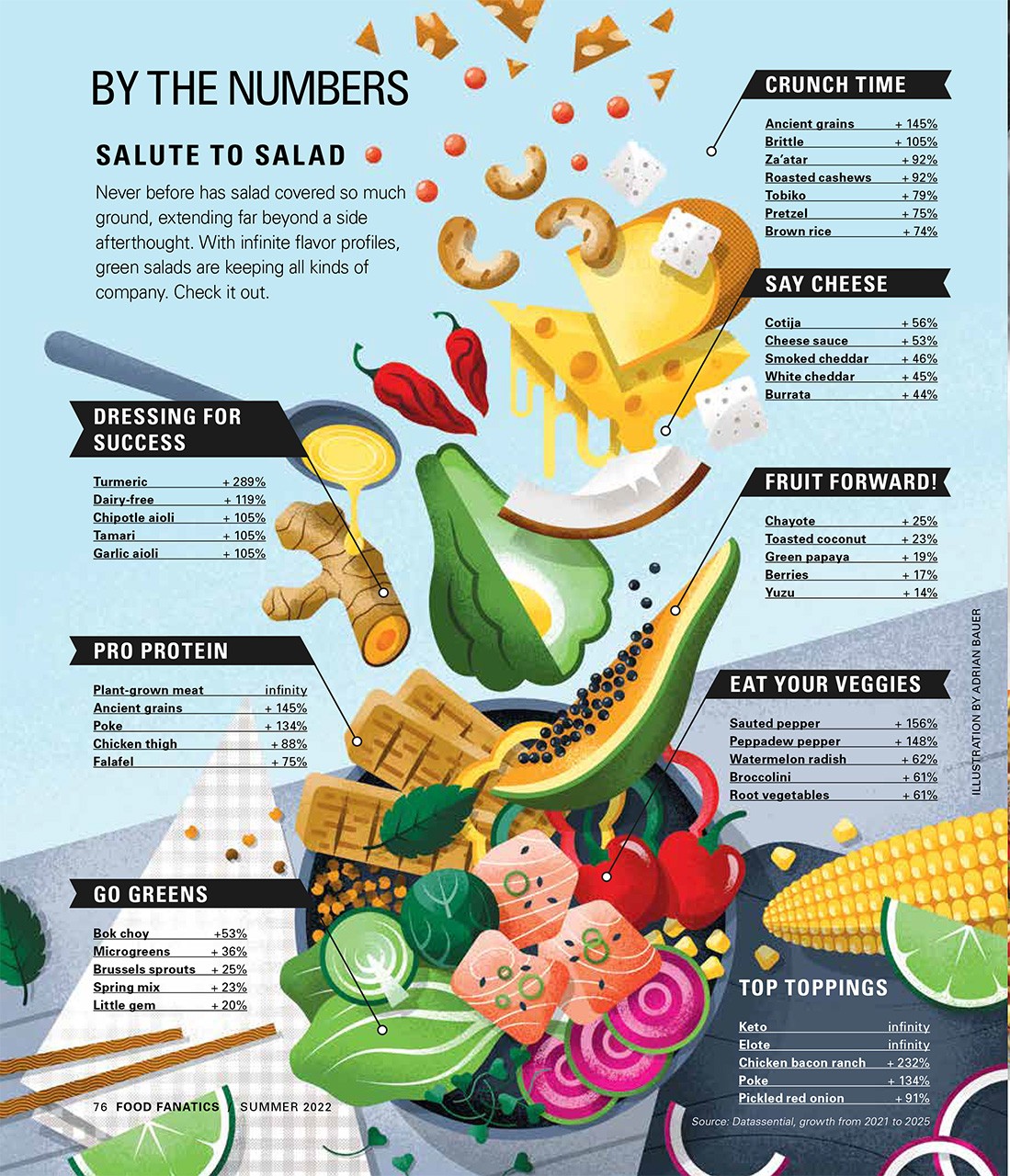6 Unique Hummus Flavors to Try
The multipurpose dip has legs that go the distance
Big props to hummus for paving the way to the next generation of dips.
Its ubiquity and ability to extend beyond its Mediterranean and Middle Eastern origins has spurred innovation at a time when the demand for meatless is at a fever pitch. Other plant-based vehicles, such as puréed black-eyed peas, white beans, lentils, carrots and beets, can be roasted or soaked and then puréed into creamy goodness. These colorful dips are super-versatile and easy to batch. They’re giving toast and avocado backlash a new life – and make for a popular shared starter with bread service, crackers and crudité. Plus, these plant-based dips are crowd pleasers that are suitable for a variety of diets and concepts.
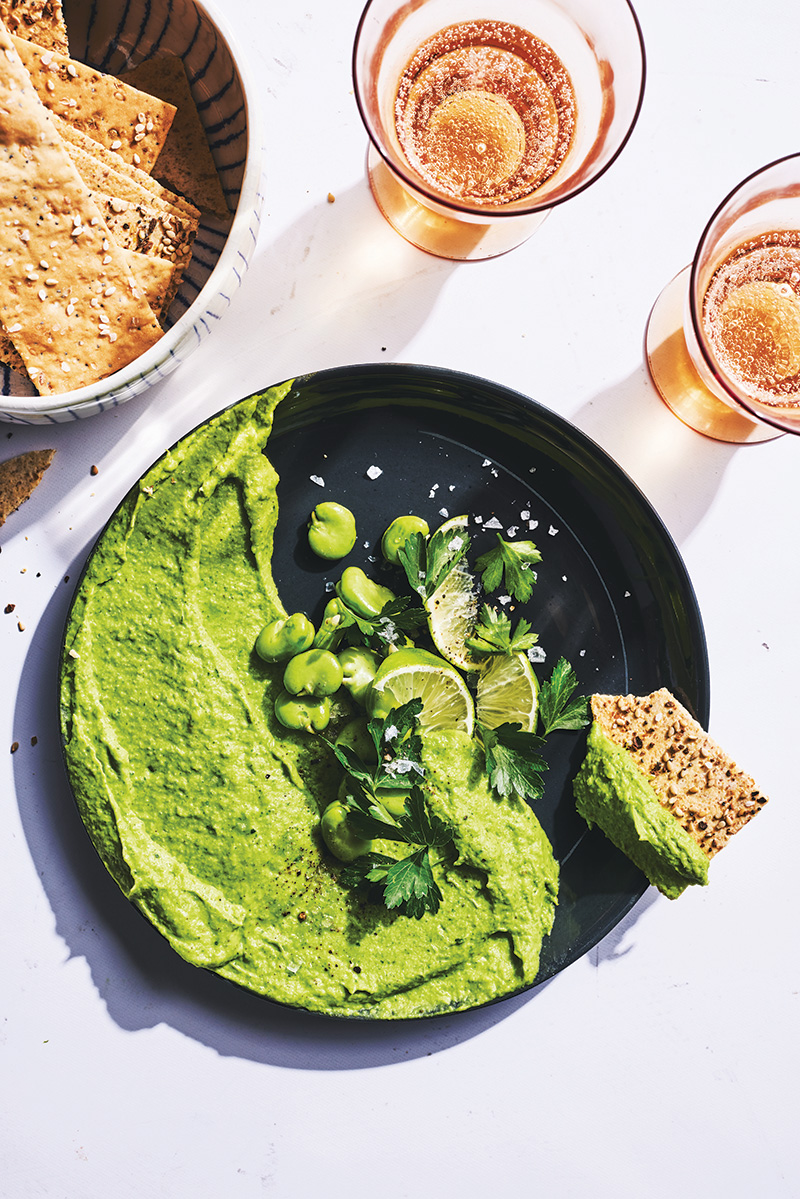
Recipes from this article:
► 1. AVOCADO HUMMUS
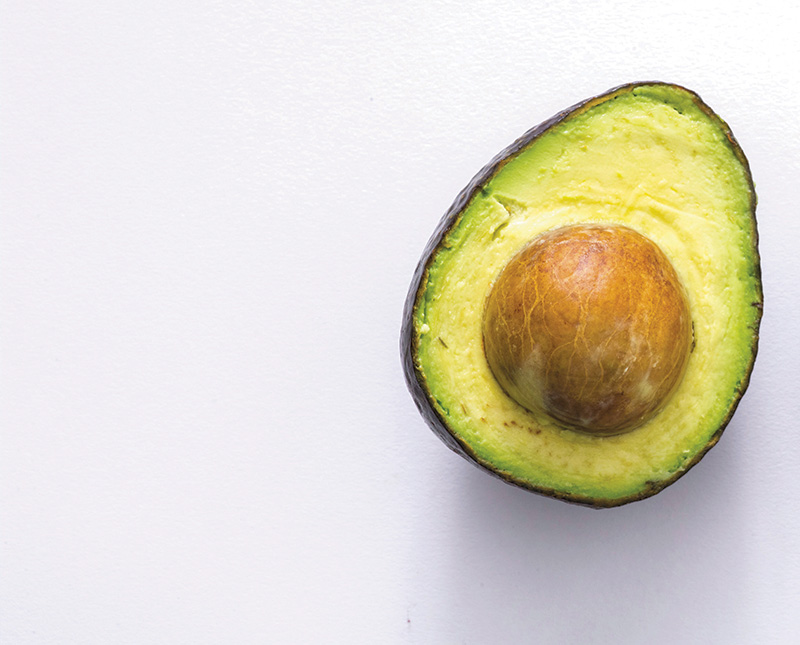
At new all-day café Tommy’s in Beverly Hills, avocado gets the hummus treatment, blended with charred poblano peppers, tahini, lime, garlic, yuzu and white soy. Executive chef Vartan Abagaryan creates a deep well in the center for salsa macha – a blend of ancho, pasilla and arbol chiles with sunflower, sesame and pumpkin seeds, peanuts, lemon zest and salt. This Mexican twist on hummus is a far cry from guacamole – rather, something entirely new, garnished with sprigs of cilantro and served with crispy charred flatbread.
► 2. FAVA BEAN HUMMUS
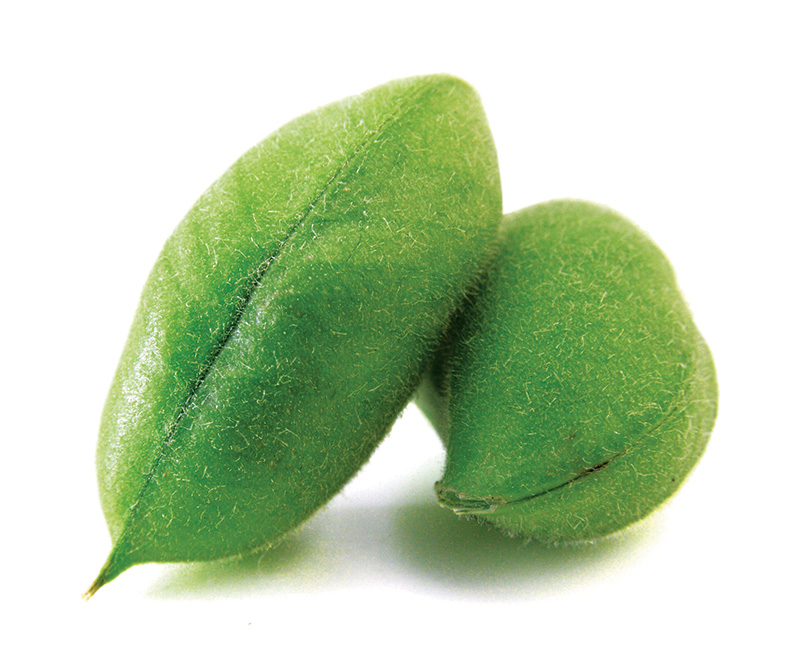
Zooba is a fast casual restaurant in New York specializing in modern Egyptian street food. Executive Chef Moustafa Refaey says that in Egypt, fava bean hummus is more common than the chickpea variety known stateside. “In Egypt, we call it besara, and it’s an old dish that dates to more than 1,000 years ago,” Refaey says. “It comes in different variations, often with coriander, malo leaves or sometimes lentils.”
Zooba’s fava bean hummus is lighter than traditional chickpea hummus, a sage green that works well for summer. Refaey serves it as an appetizer or side dish, topped with a handful of crunchy toasted fava beans with baladi – a whole wheat, housemade pita – for dipping. It’s also used as a condiment in salads and sandwiches, including an Egyptian falafel salad alongside roasted eggplant, shredded carrots and lightly pickled beets. “It’s often described as being very creamy, tangy and balanced,” he says. “Customers love it.”
► 3. BLACK GARLIC HUMMUS
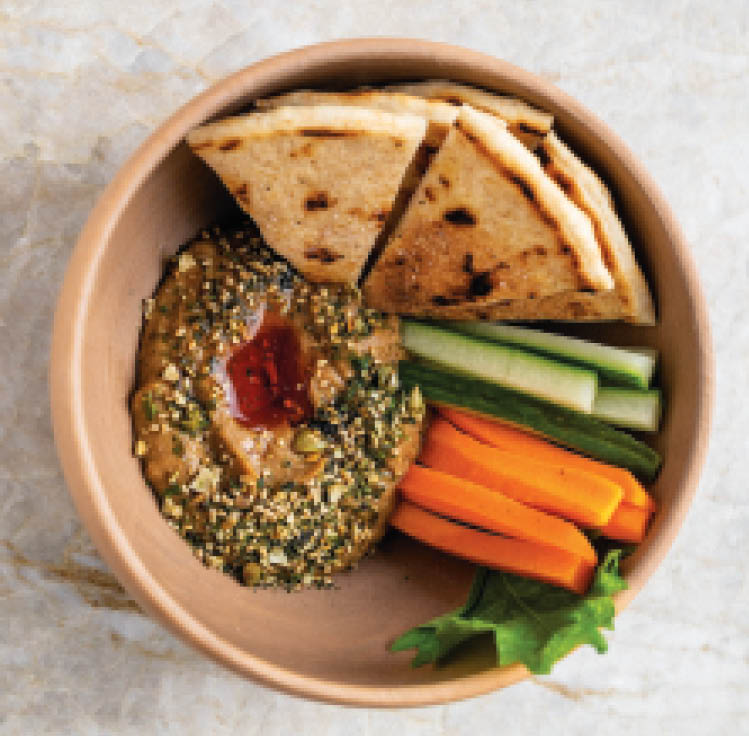
When chef Raymond Li was looking for a more creative version of hummus for Kaori Miami, a Mediterranean and Asian fusion restaurant, he turned to black garlic for its distinctive sweet and pungent flavor. He blends a 3:1 ratio of a gingery black garlic base to garbanzo beans, and finishes this popular appetizer by garnishing it with pumpkin seed furikake and chili sesame oil.
“Black garlic provides an added depth and funk to the hummus,” Li says. “The crunch from the toasted pumpkin and sesame seeds, plus the slight heat from the chili oil, really complement one another. Guests are loving the uniqueness.” Li goes through so much hummus that batches are made daily, but it can last two weeks vacuum-sealed.
► 4. RED LENTIL HUMMUS
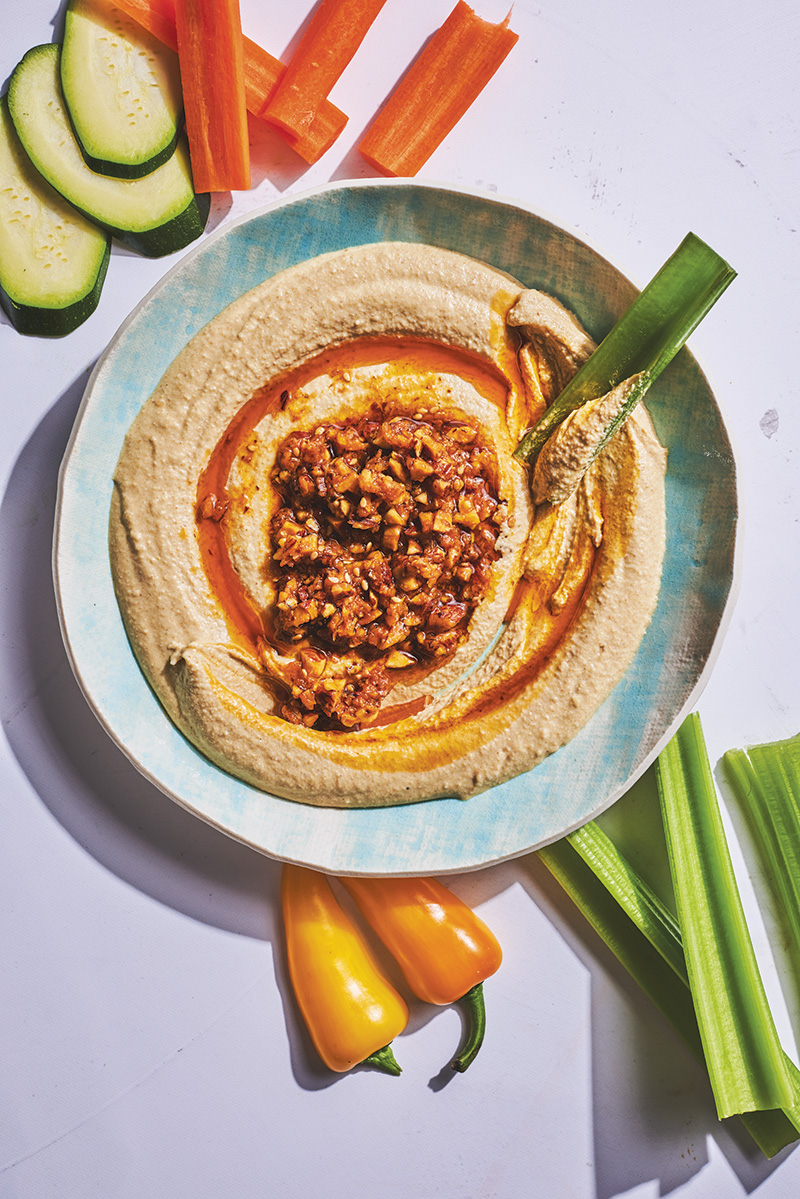
Dips, spreads and condiments are important features of the shared plates menu at Little Saint, a new farm-forward, plant-based restaurant, café and wine shop in Healdsburg, California, by Kyle and Katina Connaughton of SingleThread. One of chef de cuisine Bryan Oliver’s favorite dips is a red lentil hummus served alongside housemade flatbread and raw vegetables from their Little Saint Farm.
“I prefer hummus to be smooth and creamy without being overly thick,” he says. “This recipe’s tahini ratio adds a well-rounded nuttiness to the hummus, while still letting the flavor of the red lentils shine.” Oliver creates a well in the center of the hummus and adds harissa almond oil with coarsely chopped almonds for a spicy, crunchy accent. It’s also an opportunity to cross-utilize harissa paste, which he’s already making from scratch, using peppers from their farm.
► 5. PROBIOTIC BEET TAHINI
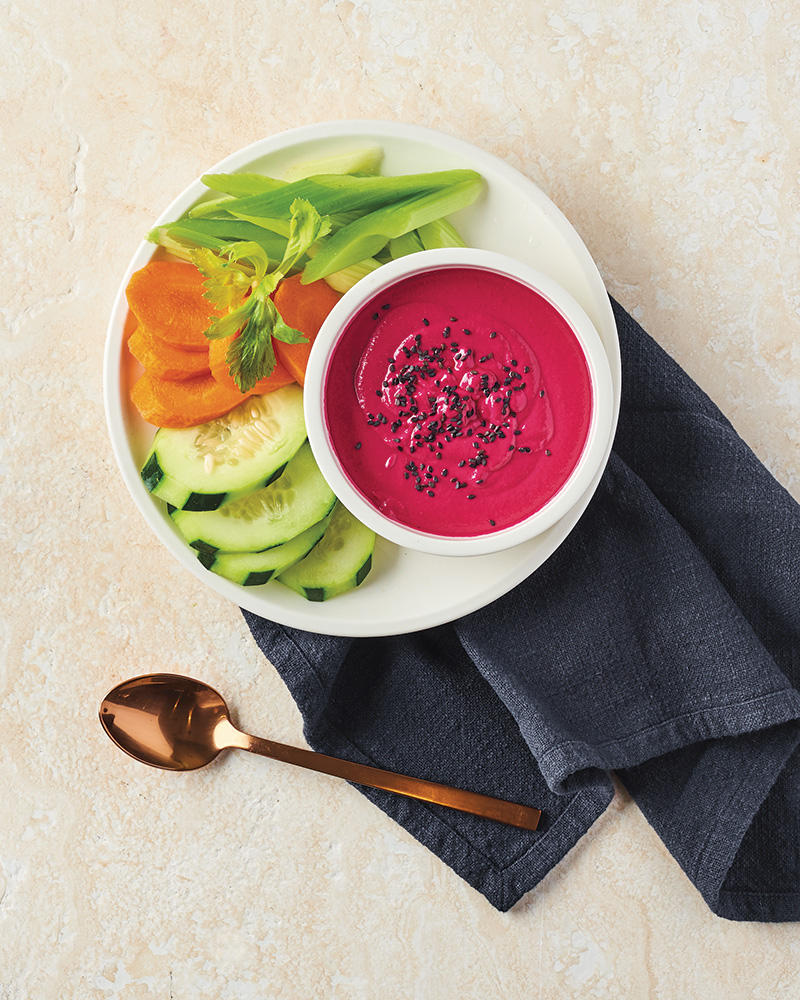
At vegan haven Cafe Gratitude in Southern California, Executive Chef Seizan Dreux Ellis also serves a vibrant, velvety smooth purple and red beet tahini. “Color is always an important element of selling any kind of plant-based food,” he says. “You want the beet tahini to be veggie-forward, as the tahini is really only a binder that gives the dip a healthy fat component. Too much tahini can overpower the flavor.” The probiotic element comes in with the addition of kimchi and sauerkraut, which add a splash of tangy acid and help preserve the tahini for a couple extra days.
"DON’T BE AFRAID TO GET CREATIVE, BECAUSE ALL SORTS OF VEGGIES CAN CREATE DELICIOUS HUMMUS. GOOD HUMMUS CAN BE MADE OF JUST ABOUT ANYTHING.”
— Executive Chef Seizan Dreux Ellis of Café Gratitude
“Tahini sauce in itself can be too fat-forward, so the acid from the kimchi and sauerkraut balances it out,” he says. At Café Gratitude, beet tahini is served with a flash-fried romanesco dish in winter, but for summer, try it as a colorful and creamy salad dressing.
► 6. ZUCCHINI CILANTRO HUMMUS
At Cafe Gratitude, zucchini cilantro hummus has been on the menu for more than a decade, served with a raw falafel plate, slathered on a summer falafel burger and alongside muhammara on a Mediterranean appetizer sampler with crudité and housemade sprouted buckwheat flax crackers. “Don’t be afraid to get creative, because all sorts of veggies can create delicious hummus,” says Ellis.
“Good hummus can be made of just about anything, but make sure that it’s not too dense by adding some liquid to it. And don’t overdo the oil, because it’s not as tasty or appealing if the dip is too heavy and fatty.” Ellis prefers to leave this hummus with a little more texture, so you can see green specks from the zucchini.



